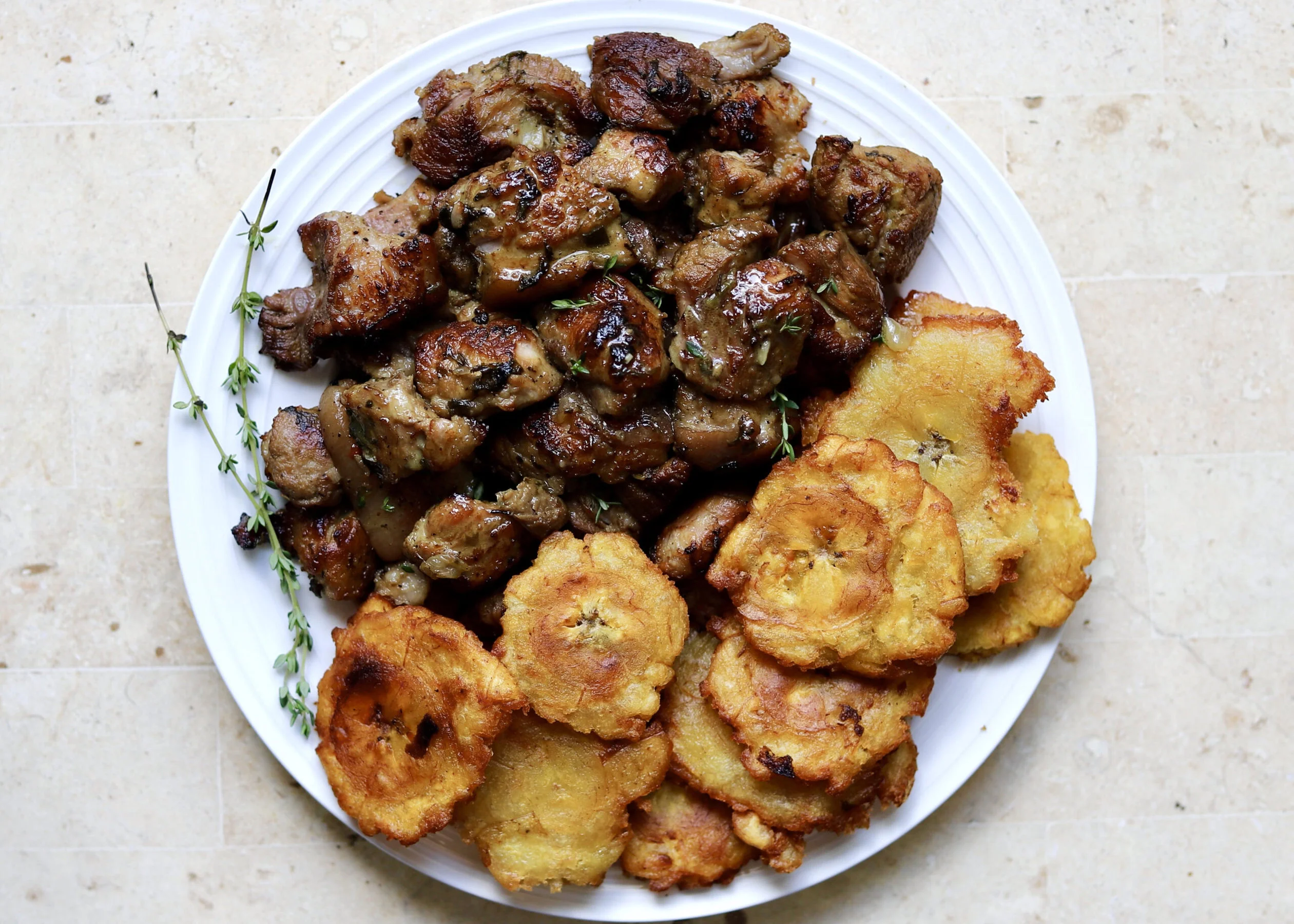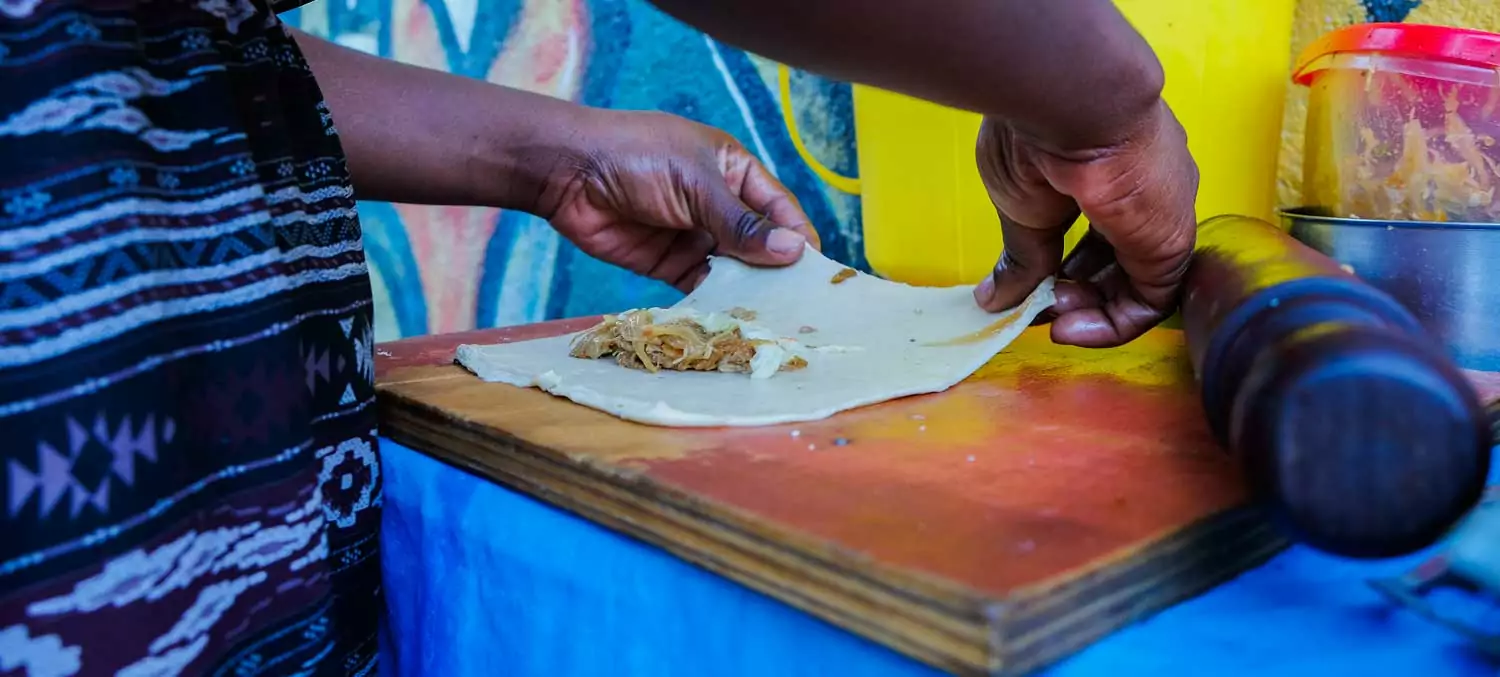Haitian street food is more than just something to eat — it’s a living, breathing expression of a nation’s soul. Whether you’re strolling through the bustling streets of Port-au-Prince, the seaside charm of Cap-Haïtien, or a sleepy town market on a Sunday morning, the air is alive with sizzling pans, laughter, and irresistible aromas.
Every corner tells a story, and every plate holds centuries of flavor and history.
A Symphony of Smells, Sounds, and Smiles
Step into any Haitian market and your senses are instantly overwhelmed — in the best way possible.
The smoky scent of fried plantains mingles with the spice of pikliz, the tang of citrus, and the sweet perfume of roasted corn (mayi boukannen). Vendors call out their daily specials while customers bargain with easy smiles and laughter.
For many Haitians, grabbing a quick bite from a street vendor isn’t just convenience — it’s tradition. It’s a chance to connect, to share, and to celebrate community.

Fresh Ingredients, Deep Cultural Roots
The foundation of Haitian street cuisine lies in the land itself. Farmers in the mountains and plains provide an abundance of fresh produce: malanga, cassava, sweet potatoes, peppers, and plantains. These ingredients are transformed by skilled hands into dishes that balance boldness and comfort — the kind of food that feeds both body and soul.
What makes this food truly special is how deeply it reflects community craftsmanship. Recipes are passed down by memory, not written in books. A simple fritter or roasted breadfruit carries generations of know-how and unspoken pride.

A Fusion of Flavor and History
Haitian cuisine is a story of migration, adaptation, and resilience. Influences from Africa, France, and the Caribbean have fused over centuries to form something uniquely Haitian. The result is a flavor palette that’s as bold as the nation’s history — spicy yet balanced, rustic yet refined.
- Griot, marinated pork fried to perfection, symbolizes celebration.
- Akra, made from malanga root, embodies simplicity elevated through technique.
- Marinad, crisp and savory fritters, are the heartbeat of every afternoon snack break.
- Soup Joumou, though not typically “street food,” remains the soul of Haitian independence, often shared during gatherings.
Every dish is layered with meaning. Every bite carries echoes of survival and creativity — of people who learned to make magic out of what the land gave them.

The Spice, The Crunch, The Accompaniments
No Haitian meal is complete without pikliz — that fiery mix of pickled cabbage, carrots, and Scotch bonnet peppers that cuts through the richness of fried foods. Beside it, you’ll often find bannann peze (twice-fried plantains), crispy on the outside, soft inside, served in newspaper cones or on metal trays.
And then there’s mayi moulen — cornmeal cooked to creamy perfection, often served with herring or beans — a comfort food that tastes like home.
It’s this contrast — soft and crunchy, sweet and spicy, hot and cooling — that makes Haitian street food so addicting. Each bite teases the senses and demands another.
More Than Just Food: A Social Gathering
Haitian street food thrives where people gather — at soccer matches, church fairs, bus stations, or outside schools. It’s a meeting ground, a heartbeat of everyday life.
Many vendors become local celebrities, known by nickname and flavor. Customers return not just for the food, but for the laughter, the gossip, the shared humanity.
Buying a plate of griot or a bag of chokola peyi (local chocolate drink) isn’t just a transaction — it’s part of the rhythm of living Haitian. The food becomes a bridge across generations, classes, and neighborhoods.
In this way, Haitian street food serves as an unspoken unifier — a symbol of resilience, pride, and collective joy.

A Celebration of Color and Craft
Every vendor has their own secret touch. One might add a dash of lime to their marinade, another uses cloves and cinnamon in the oil.
The artistry lies not just in taste but presentation — handwoven baskets, enamel plates, banana leaves folded with care.
Even the drinks have personality: Fresco (shaved ice with syrup), jus grenadia (passion fruit juice), and cola Couronne are beloved companions to a hot meal.
The beauty of this world lies in its spontaneity — no uniform, no corporate branding, just heart, skill, and community spirit.
Healthy by Nature
Though often indulgent, Haitian street food uses whole ingredients: root vegetables, herbs, fruits, and lean proteins. It’s food that connects back to the soil.
Malanga, for example, is rich in fiber and iron. Plantains are full of potassium and complex carbs. The chili peppers used in pikliz boost metabolism and immunity.

Many vendors also adapt recipes for lighter versions — baking instead of frying, or using coconut oil for a cleaner flavor. Behind the street smoke and sizzling pans lies a culinary wisdom that balances indulgence with nourishment.
The Soul of Haiti on a Plate
At its heart, Haitian street food tells the story of a people who turn ordinary moments into celebrations. It’s a reminder that joy doesn’t require luxury — just good company, good music, and something delicious cooked with love.
Next time you walk through a Haitian street market or stumble upon a fritay stand, pause and savor the experience. Listen to the laughter, watch the sizzling oil, taste the spice that dances on your tongue — and you’ll understand that this isn’t just food. It’s Haiti, alive and unfiltered.



